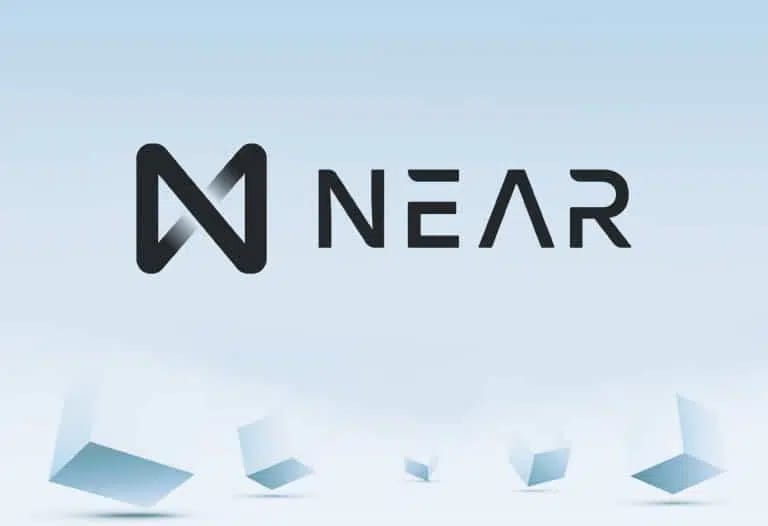The Decentralization of NEAR
⚫ Have we seen the Near Protocol become more or less decentralized over time?
⚫ Near Protocol
Near Protocol is a decentralized, blockchain-based platform designed to enable developers to build and deploy decentralized applications (dApps) quickly and efficiently. The protocol was created in 2018 and its goal is to make blockchain technology more accessible to developers and users. The Near Protocol is built on a proof-of-stake consensus mechanism and uses a sharding approach to increase throughput and scalability.
The Near Protocol also features its own native token, called NEAR, which is used to pay for transaction fees and to incentivize validators to secure the network. The NEAR token can also be staked by users, who can earn rewards for participating in the network and helping to secure it.
The Near Protocol is designed to be developer-friendly and aims to lower the barriers to entry for developers who want to build blockchain-based applications. The platform provides a range of tools and resources, including a software development kit (SDK), smart contract language, and other developer tools, to help developers get started building on the platform.
In this dashboard, we used metrics such as the Nakamoto coefficient to measure the Near's decentralization. We used more simplified metrics like number of validators and % of staked supply to illustrate how the narrative of NEARs decentralization has evolved.
Decentralization in a proof-of-stake (PoS) blockchain like Near protocol is typically measured by looking at the distribution of stake among the network's validators. One common metric used to measure decentralization in PoS blockchains is the Gini coefficient. The Gini coefficient is a statistical measure of inequality that ranges from 0 to 1, with 0 indicating perfect equality and 1 indicating perfect inequality. In the context of a blockchain, the Gini coefficient is often used to measure the distribution of stake among validators. A higher Gini coefficient indicates that stake is more concentrated among a smaller number of validators, while a lower Gini coefficient indicates a more equal distribution of stake among validators.
Other factors that can impact decentralization in a PoS blockchain include the number of validators in the network, the Nakamoto coefficient. The Nakamoto Coefficient measures the minimum number of validators required to collude and disrupt a blockchain. In the NEAR's consensus mechanism, the Nakamoto Coefficient is determined by the minimum number of validators controlling 33.3% of the total staked supply. The lower the Nakamoto coefficient is, the fewer validators have the potential to disrupt the network. This shows the low degree of decentralization of a network. Therefore, the higher this coefficient is, the greater the degree of decentralization of that network.
In this dashboard, we used Flipside's new fact_staking_balances and fact_staking_pool_daily_balances tables to explore the decentralization of NEARs ecosystem.

🟢 Staking on Near Protocol
In the NEAR Protocol, staking involves locking up a certain amount of NEAR tokens to participate in network security and governance. By staking NEAR tokens, users can become validators or delegators.
Validators are responsible for producing new blocks on the NEAR blockchain, verifying transactions, and helping to maintain network security. They are required to stake a minimum amount of NEAR tokens to participate in the network as a validator.
Delegators, on the other hand, can delegate their staked tokens to a validator of their choice, earning rewards proportional to the amount of tokens they delegate. Delegators do not participate directly in network security, but they can help to decentralize the network and contribute to its overall security.
The staking mechanism in NEAR uses a **proof-of-stake consensus algorithm, where validators are chosen to produce new blocks based on their staked tokens and reputation scores. Validators are also subject to a set of rules and penalties to ensure network security and stability.

There are currently 363 validators on the Near chain. These validators have currently staked a total of 525.8M NEAR. In other words, about 46% of the total supply of NEAR has been staked. The average balance of each validator is 1.4M NEAR, and half of the validators have a balance greater than 41.1K NEAR. On the other hand, the highest balance is for a validator with 39.7M NEAR. In other words, this validator owns about 3.5% of the total supply of NEAR. Currently, the minimum balance of a validator is 30 NEAR.
The results show that the number of Near chain validators has increased over time. Along with the increase in the number of validators, the total number of stacked NEARs has also increased. An interesting point in the chart is that from the beginning of December 2022 to the end of January 2023, the number of validators has grown significantly. During this period, the number of validators increased by 23%. In the last months of 2021, we saw a significant growth in the number of validators. During that period, the number of validators increased by 119%. On the other hand, for 2 times staked NEARs have faced a significant decrease. For the first time in January 2022, the volume of staked NEARs decreased by about 12%. For the second time in June 2022, the staking volume decreased by about 9%.
The chart below shows the average and median balance of validators in relation to the total volume of NEAR staked in the monthly time frame. These ratios have decreased over time. In August 2020, each validator held an average of 24% of all staked NEARs. In August 2022, this value reached 0.4%. This is a factor that shows that the decentralization of the Near chain has gradually increased.
The chart below shows the maximum balance of validators in relation to the total volume of NEAR staked. Given that there was only one validator on August 25, 2020, we ignore the ratio of 1 in August. In September 2020, a validator held about 20% of all staked Nears. But this amount gradually decreased. In May 2023, this value decreased to 7.5%. Therefore, the validators who have the highest balance cannot disrupt the Near network.
The chart below shows the balance range of different validators over time. The number of validators with a balance between 10 and 100 NEAR has gradually increased. From the beginning of 2022 onwards, the number of validators with a balance between 100K and 1M has been increased. In November 2022, there were 8 validators with a balance between 10K and 100K. In less than 4 months, the number of validators in this category increased by more than 1200%. Since the beginning, the number of validators that are more than 10M NEAR has also been increased. In December 2020, 68% of validators had a balance between 1M and 10M NEAR, while in April 2023, this group of validators included only 16.6% of all validators. During this interval, validators with balances between 10K and 100K NEAR increased from 1.1% to 22.7%. Validators with balances between 10 and 100 NEAR also increased from 23% to 33%. These results show that decentralization is progressing with an acceptable trend in the Near chain.
As it was said at the beginning of this dashboard, the higher the Gini coefficient for a network, the more decentralization of that network. The daily chart of the Gini coefficient for Near protocol has an upward trend. In the past days, this coefficient has reached its highest value. This index also shows that decentralization in the Near chain is increasing day by day.
Currently, the Nakamoto coefficient for the Near chain is equal to 7. This means that the total balance of 7 validators is more than 33.3% of staked NEARs. These validators, if coordinated with each other, can cause network malfunctions. Since the end of 2022, this coefficient has decreased. On the other hand, the best Nakamoto coefficient for the Near chain was equal to 11.
Currently, the largest number of validators (about 34.2% of validators) have a balance between 10 and 100 Near. About 24.5% of validators also have a balance greater than 1M NEAR. The fact that the largest number of validators have a small balance indicates a high degree of decentralization of this chain. Currently, the top 3 validators of the Near chain are:
🏆 staked.poolv1.near ➡ 39.7M NEAR
🥈figment.poolv1.near ➡ 39.5 NEAR
🥉astro-stakers.poolv1.near ➡ 26.8 NEAR
In this dashboard, we analyzed the degree of decentralization of the Near chain. The results show that the number of validators is increasing day by day. Along with the increase of validators, the total staked volume of NEAR also increases. On the other hand, the number of validators with lower balances has been increased. All these indicators show that the degree of decentralization of the Near chain is increasing day by day. Examining the Gini and Nakamoto coefficients also shows a high degree of decentralization of the Near chain.